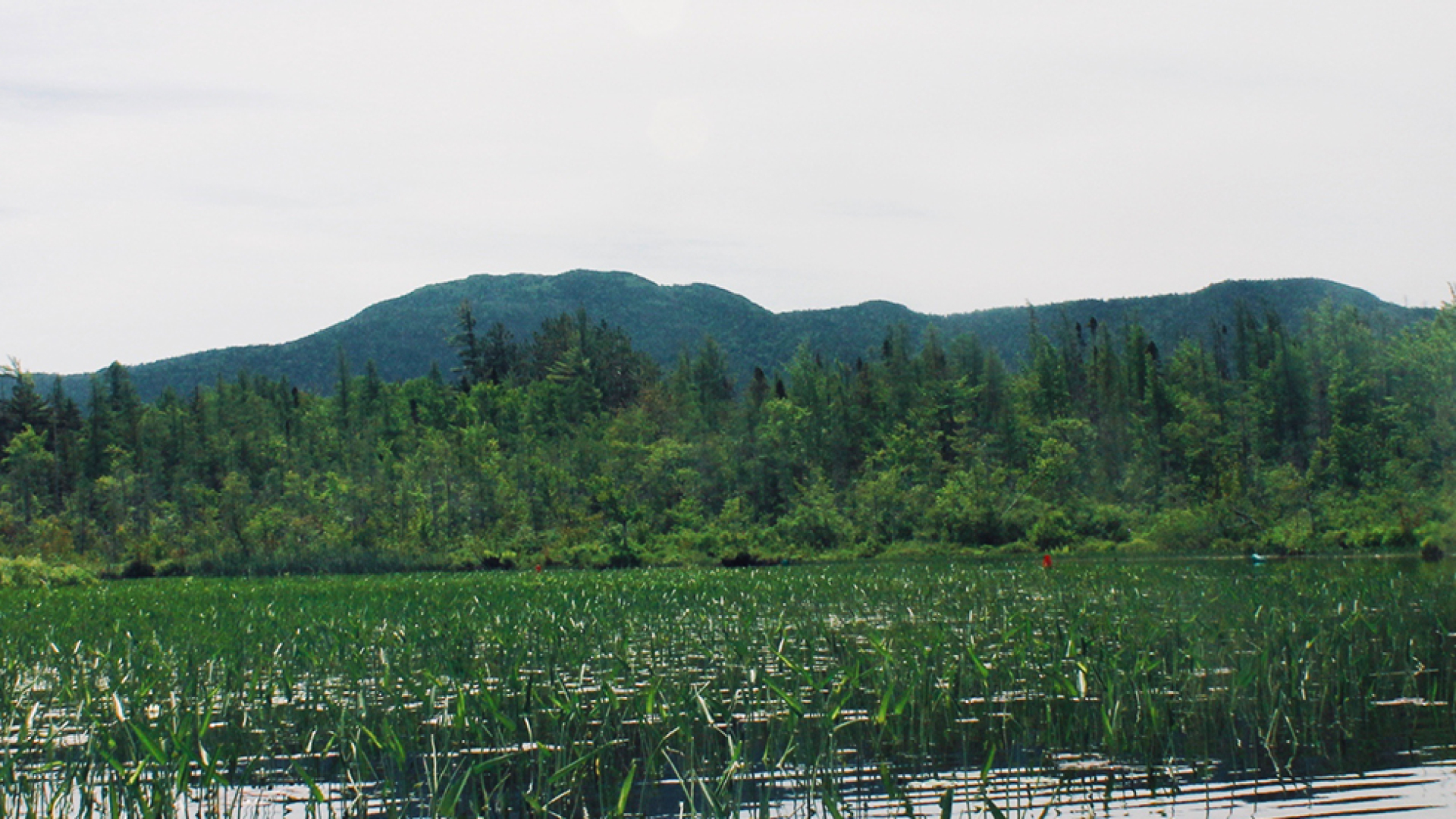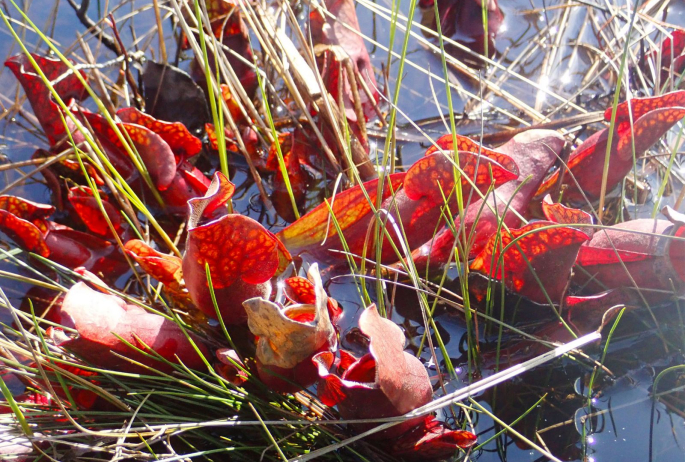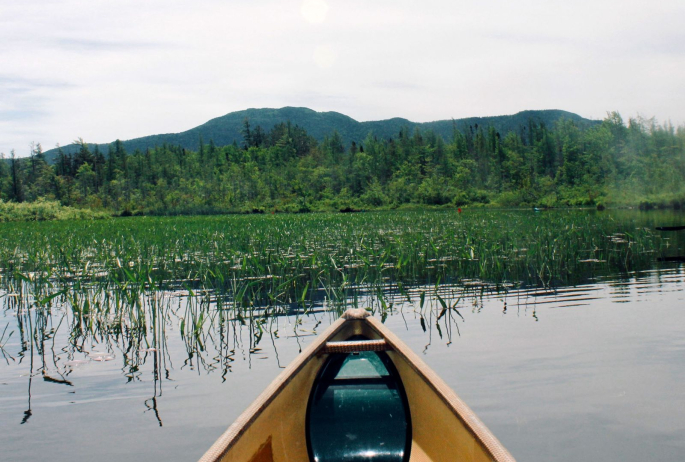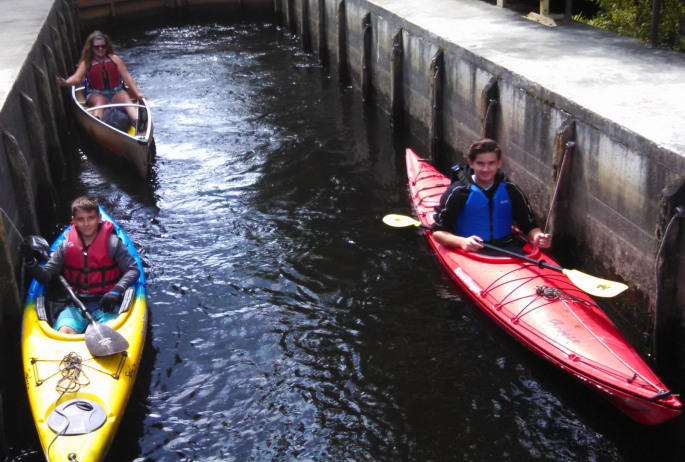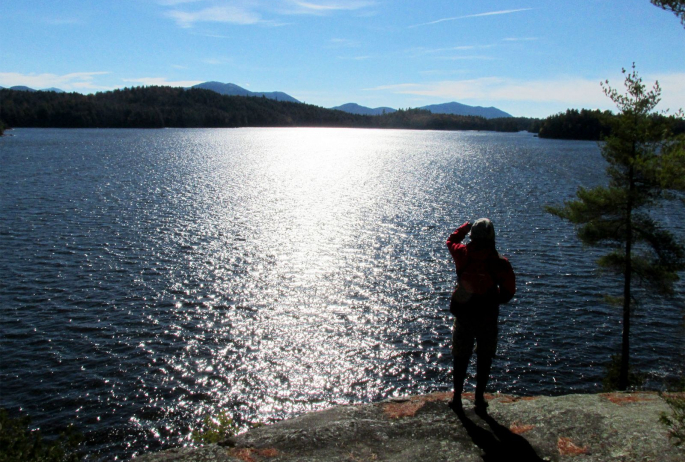Submitted by guest writer Rivka Cilley
We started out early on a cool, crisp morning in late June. We unloaded our canoes and gear at South Creek and set out on our full day trip from Middle to Lower Saranac Lake. The water temperature was warmer than the air, creating a light fog over the water.
As we paddled down the creek, we caught sight of an otter diving under the water. We took in the flora growing along the shores: the Northern blue flag irises were just beginning to bloom, and the newly emerging red and green leaves on the pitcher plants had recently opened. The brilliant greens of the newly awakened carpet of moss stood out strikingly against the feathery green of the young tamaracks; young ferns were still unfolding from their fiddlehead formations. We spotted a painted turtle sunning himself on a floating log and a black-backed woodpecker hammered its own rhythm on a distant tree. Life was very much alive and well in the bogs this time of year.
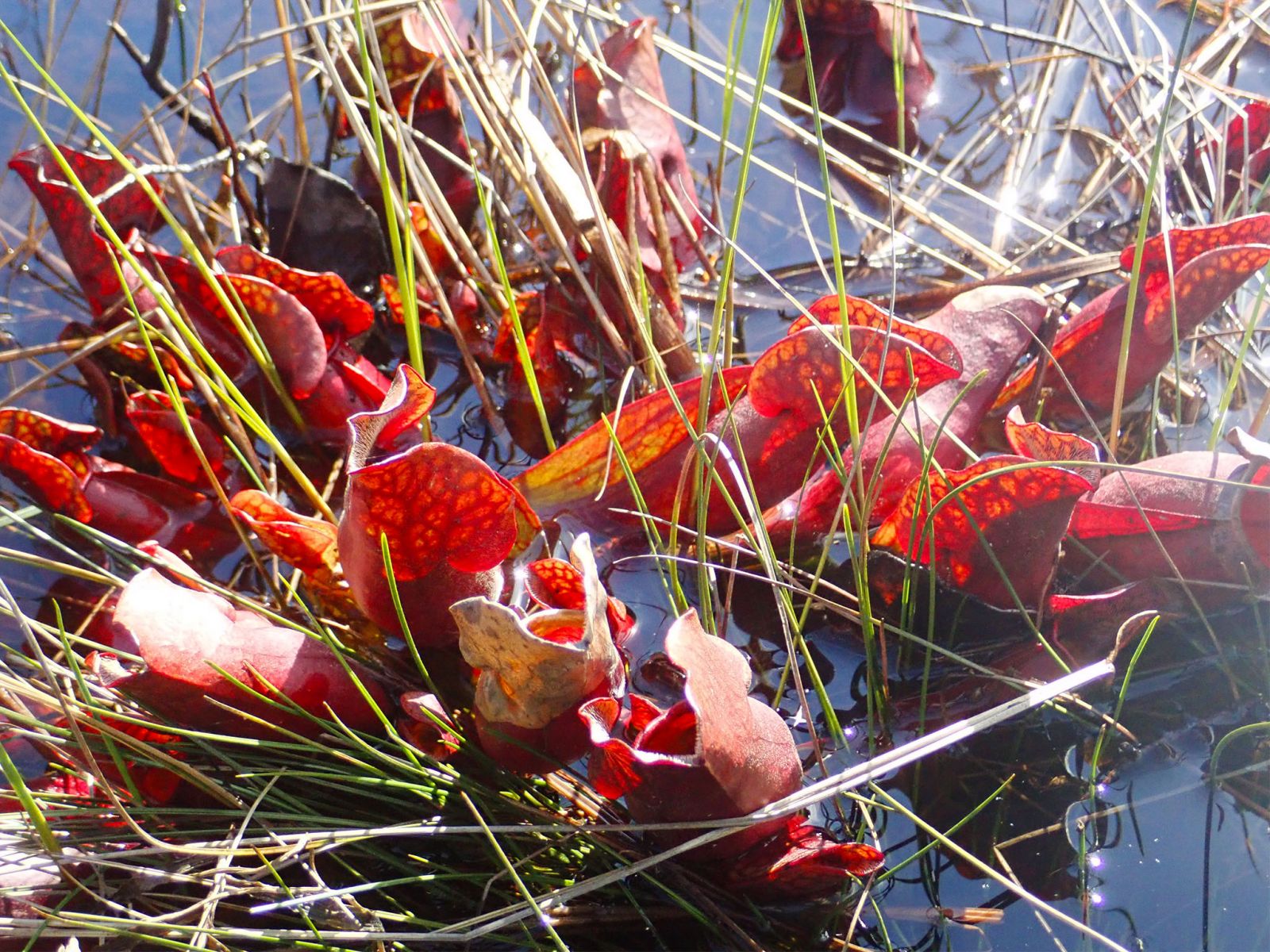
Middle Saranac
Approaching the open water on Middle Saranac Lake, the bog habitat quickly changed with the open water. The morning mist was just beginning to lift, enabling us to see the small islands. The water was calm and clear with the brilliant blue sky reflecting off the water. We were awestruck by the serenity and natural beauty of the lake.
We stopped to find our bearings by identifying Ship Island to the north and Shaw Island to the east. We paddled northeast, slowly making our way toward the meandering Saranac River which connects Middle to Lower Saranac Lake. The sunshine on our faces felt enriching after a long cold winter. We took in the beauty of the islands and made mental notes of campsites we would choose for a camping trip. We returned a wave to a couple on Shaw Island who were relaxing and enjoying their morning cup of coffee.
After passing Shaw Island, we pulled up to the white, sandy beach along the shore for a quick stop. The shallow water was warm, and we decided on a quick swim. The cool water felt revitalizing, and we heard the call of loons wailing in the distance. Loons have four distinct calls, with the wail being one of the common sounds you might hear on a lake. It is frequently used as social interaction between loons.
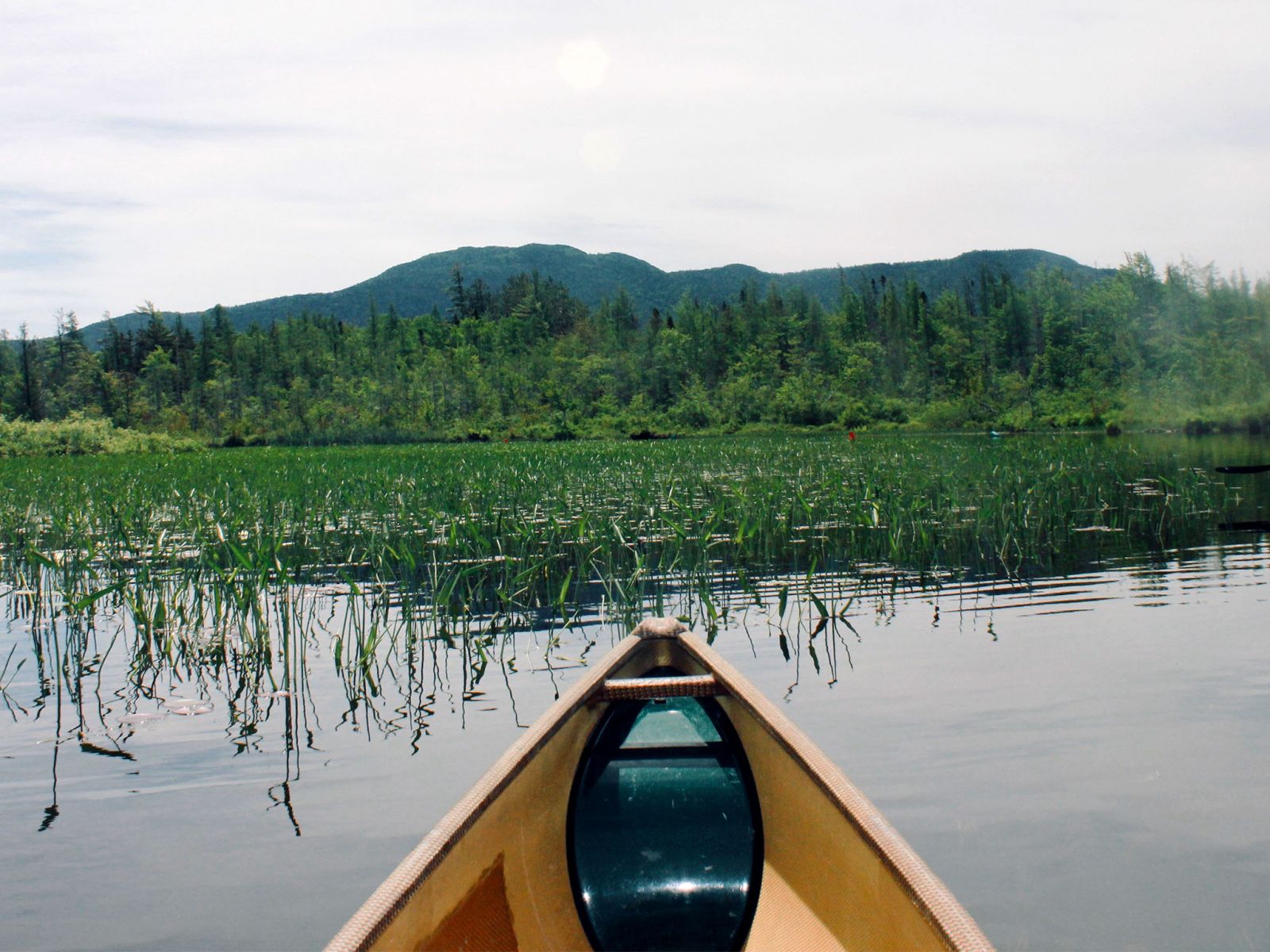
Middle Saranac Lake is the smallest of three main lakes in the chain of lakes referred to as the Saranacs. Two-thirds of the shoreline of Middle Saranac Lake is state owned, allowing open access to the public for paddling. All campsites are boat access only. The campsites on Middle (and Lower) Saranac Lake are state run, with a link for reservations that can be found at reserveamerica.com. People often make reservations well in advance due to the popularity. The campsites are clean and well operated with at least one space for tent camping, a picnic table and privy. Campsites 63, 81, and 87 each have a lean-to available for use, which is very convenient in the event of rainy weather.
A brief history of the Saranacs
Middle Saranac Lake is also referred to as Round Lake. Weller Pond, to the north, is connected to Middle Saranac by a broad, shallow, marshy stream. At its north end is a rugged portage connecting to Saginaw Bay on Upper Saranac Lake. The more popular, and shorter, connection from Upper to Middle Saranac is the Saranac River and Bartlett’s Carry. In the 1850s a dam was built here on the Saranac River to control the water levels for logging on the Upper Lake. The short portage around the dam and rapids was the spot that Virgil and Caroline Bartlett operated Bartlett’s Sportsmen’s Home from 1854 to 1884 with accommodations, food, and guides to serve up to fifty guests. After Virgil Bartlett passed on his wife Caroline operated Bartlett’s for a short period of time, eventually selling the property to create a private club in the early 1900s.
In 1968, Fran and Jay Yardley renovated and managed the property as the Bartlett Carry Club until 1984. The club is currently operated as a private cooperative with nine shareholders owning the land where the original portage crossed from Upper to Middle Saranac Lake. Fran Yardley has written a wonderful account of her experience interlaced with the history of the Bartlett Carry Club in her book “Finding True North.”
To the Saranac River
As we continued our paddle on Middle Saranac Lake, we passed into Bull Rush Bay and looked for the red and green buoys marking the entrance to the Saranac River. As we enter the Saranac, we noticed a beaver swimming in the deeper pool of water after the first turn. This is also a favorite spot for fishermen. Here, the habitat immediately changed, and we found ourselves in a bog environment with miniature sized tamarack and black spruce trees growing alongside the cattails, sheep laurel, bog laurel, bog rosemary, and Labrador tea. We paddled into the grasses to examine the white-fringed orchids and grass pink orchids. We spotted red-winged blackbirds and palm warblers joyfully flying about. We drifted along, letting the current carry us as we steered around the curves. A medium-sized boulder on the left indicated we were approaching the hand operated Upper Locks. We rounded the corner and took time to assess our landing.
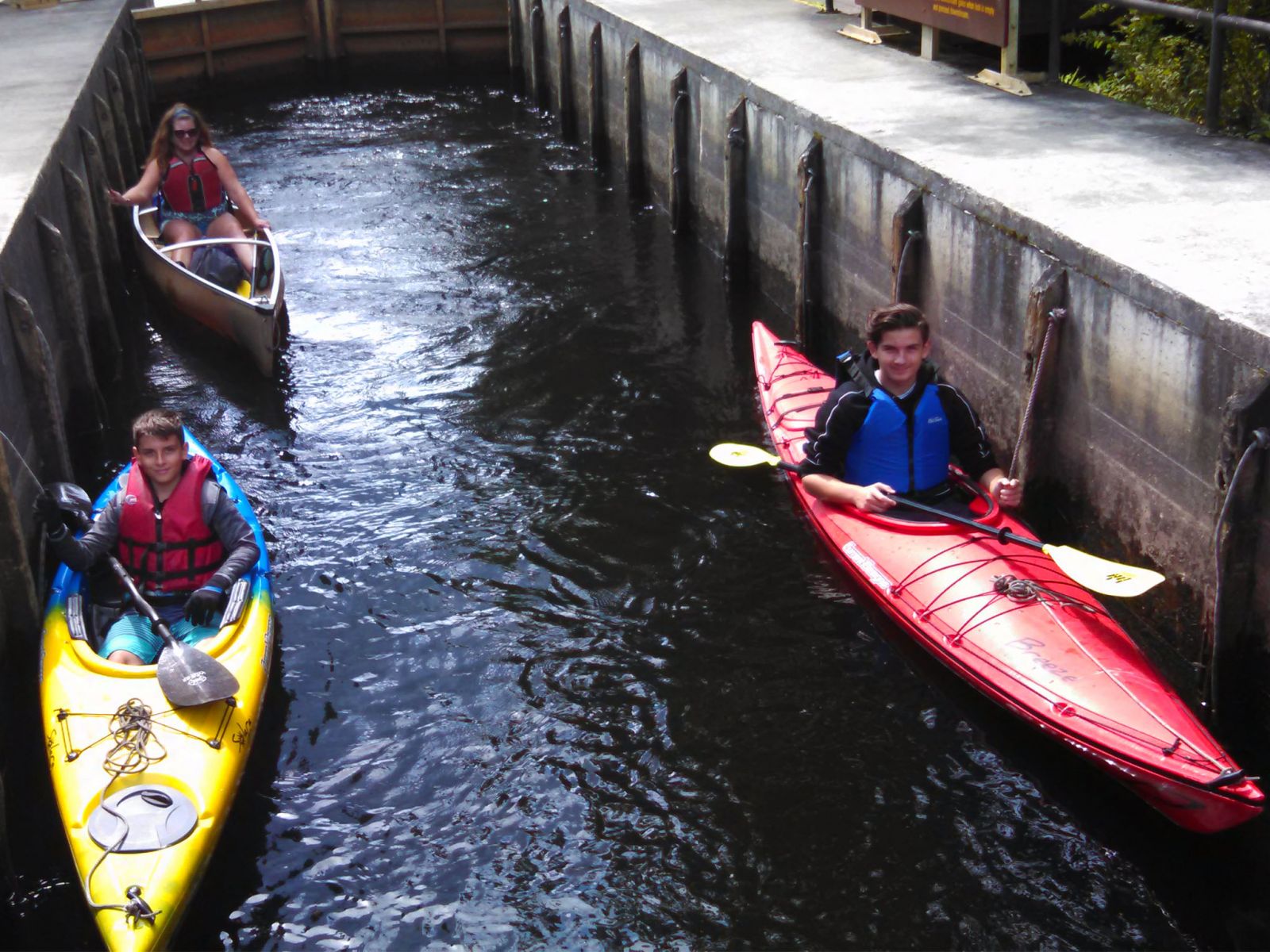
Margaret, the lock keeper, was available to help us through the locks. She motioned us into the open lock and we slowed the boat and grabbed the ropes on the cement walls. After a brief exchange of hellos, Margaret moved to close the upstream gates. She walked back past us and opens the downstream wickets — one-foot square openings that allow the water to rush out of “our lock.” The water dropped surprisingly fast and then she pusheed on the downstream gates allowing them to slowly open, equalizing the water level in the lock and in the river. Margaret waved and we were on our way downriver towards the Lower Lake. The locks were built for easier navigation around the rapids and we now realize that we just avoided a portage.
We passed through a wooded area and caught sight of an osprey flying gracefully overhead. Just before we reached Lower Saranac Lake, we took a short detour into Kelly’s Slough. This is a favorite area of ours because it is so alive with wildlife. There was a large beaver house that we paddled around. We have even taken under water photographs of the entrances to the beaver house. Kelly’s Slough was thick with white water lilies, yellow pond lilies and pickerel weed. The wooded area is well known for moose, but we didn't see any on our trip.
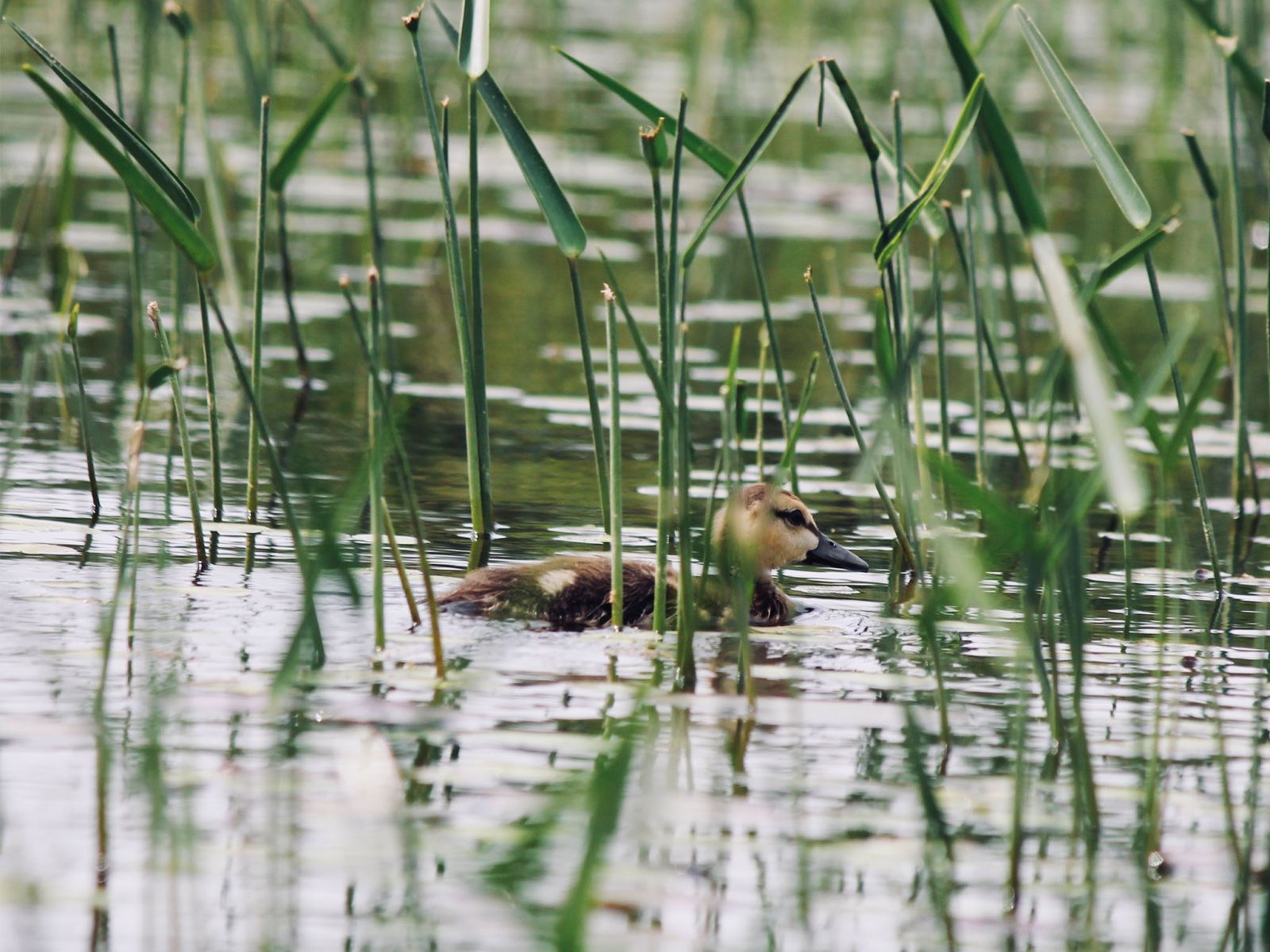
Back in the river we paddled past Pulpit Rock, a high ledge that is hard to miss. As we made the last turn, the view of Lower Saranac Lake opened and we still had some more adventure ahead. Since it was early in the season, we were fortunate to be able to lunch at our favorite site in the Narrows, number 45. This site not only has a lean-to and privy, but a large rock that extends out on the water. We took out our hummus and cheese lunch and sat on the rock to soak up the views. The warm sun made us feel a bit dreamy.
Heading home
After a good hour of snacking and relaxation, we got back in our canoes and paddled through the islands. No matter how many times we paddle this route we always find it amusing to examine the names of the islands, imagining who had the fun of coming up with such names including Duck Island, Gull Rock, Watch Island, Burnt Island, Pope Island, Partridge Island, and The Twins. It is interesting to contemplate all the people who have paddled this lake over the past hundred years and how they spent their time on these islands. We stopped at Bluff Island and scampered up the ridge to take in the length and breadth of Lower Saranac Lake. We examined the map to check out significant landmarks, then took photos of the view and ourselves before heading back to our canoes.
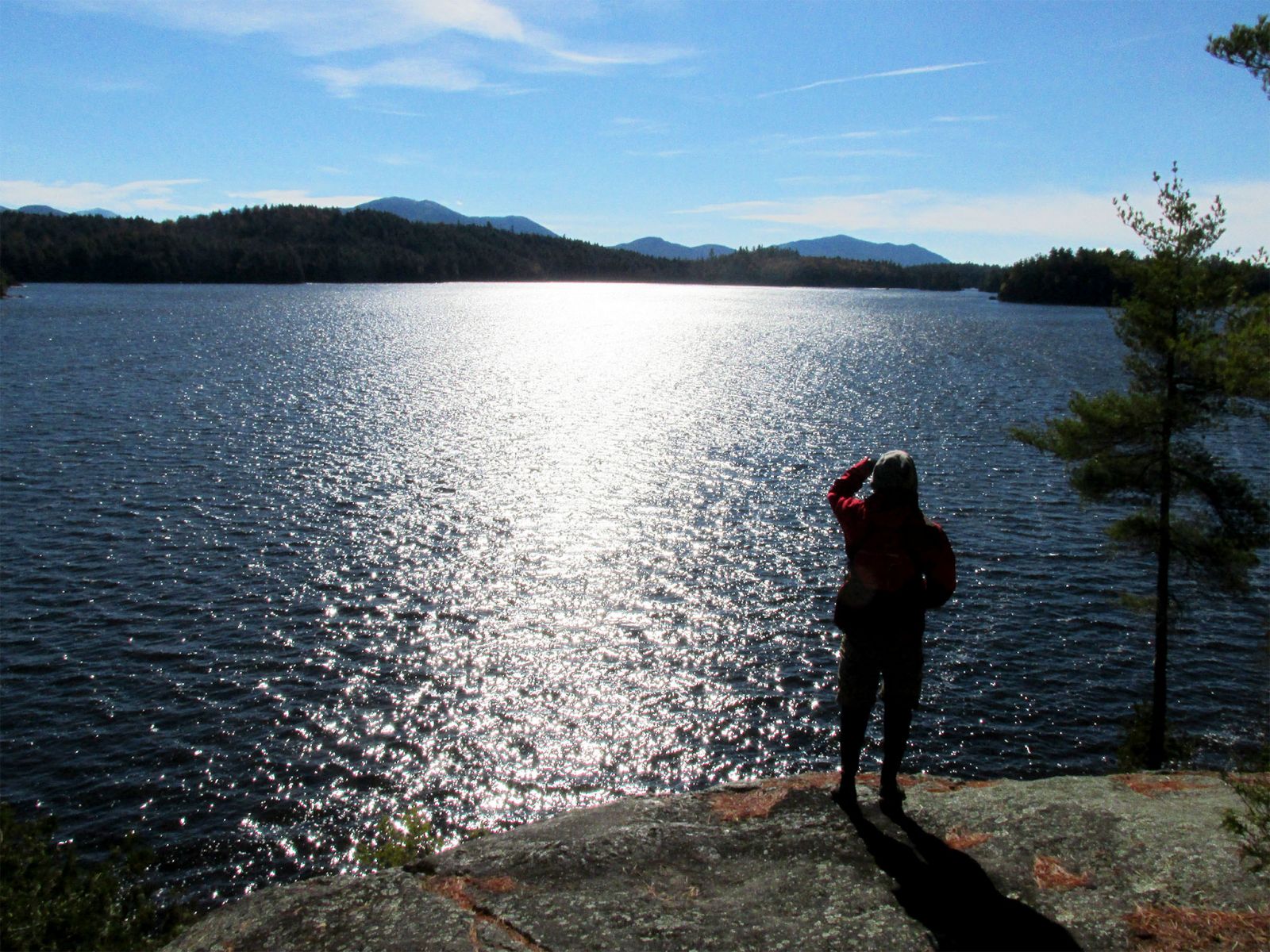
The final section of our paddle took us into First and Second Pond, our take out for the trip. This area can be heavily traveled by motorboats since the landing is a major access point for them. We were careful to stay close to the shore and out of the way of any motorboat traffic. We made our last turn and saw the familiar sight of the Route 3 bridge — there was a pair of loons in a cove and we took in the melodic sounds of their tremolo call. Our hearts filled with joy. The trip couldn’t have ended on a better note.
This week in ADK news:
Saddled with fun
Lakefront lodging
Dining with a view
Cool summer events
Happy birthday, Tupper Arts
Going back to the prairie
Learn about iron's past
